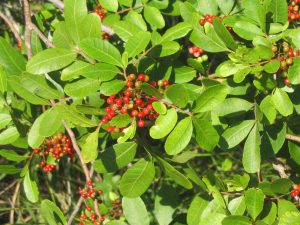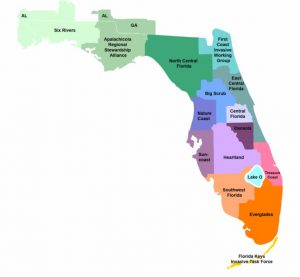Blog by Morgan Pinkerton and Tina McIntyre, UF/IFAS Extension Seminole County
What is an invasive weed?
There are a lot of weeds out there! Some are more problematic than others, but not all of them are invasive. Invasive weeds are plants that are non-native, or from another part of the world, and causing problems in the area they have been introduced. There are several important lists out there that identify problematic weeds. Here in the U.S. and Florida, we have many lists that point out invasive weeds. Some important lists here in Florida include the Federal Noxious Weed List, Florida Noxious Weed List, Florida Exotic Pest Plant Council Invasive Plant (FLEPPC) Lists, the CISMA Early Detection and Rapid Response Lists, and more. You might notice some overlap between these lists!
What is the Federal Noxious Weed List?

The Federal Noxious Weed List contains noxious plants that are a concern in the U.S. As defined by the Federal Noxious Weed Act of 1974, a noxious weed is “any living stage (including seeds and reproductive parts) of a parasitic or other plant of a kind which is of foreign origin, is new to or not widely prevalent in the U.S., and can directly or indirectly injure crops, other useful plants, livestock, poultry or other interests of agriculture, including irrigation, navigation, fish and wildlife resources, or the public health.”
Simply put, this is a non-native weed that can cause a problem in agriculture, natural resources, or public health. The plants on this list require special permits for any importation or interstate movement. That being said, you wouldn’t be moving them without a very good reason. For example, the plants may be getting sent to a containment lab for scientists to do important research.
What is the Florida Noxious Weed List?
The Florida Noxious Weed List is specific to Florida. It includes plants that could be a significant threat to Florida’s agriculture or native ecosystems. This includes weeds like coral ardisia and alligatorweed. Some of these plants may also be on the Federal Noxious Weed List and others just may be a particular concern in Florida. It is the responsibility of Florida’s Noxious Weed and Invasive Plant Review Committee to review the list. If a plant is on the list, there are legal regulations that restrict the movement and containment of the plant within the state of Florida.
What are the FLEPPC lists?

Every two years, the Florida Exotic Pest Plant Council Invasive Plant (FLEPPC) creates a list of problematic plants for Florida. The FLEPPC Lists are divided into two groups: Category I and Category II plants. They also show what zone of Florida the plant is an issue, either North, Central, South, or a combination. Category I plants are invasive weeds that have altered native plant communities in Florida. The Category II invasive weeds have increased in abundance or frequency, but have not yet effected Florida’s plant communities. Basically, a Category I plant is causing problems and a Category II plant is on the rise, but not caused serious issues yet. Brazilian peppertree is an example of a Category I species from the 2019 list. It has caused significant impacts throughout the state in recent years.
What are the CISMA EDRR lists?

CISMA stands for Cooperative Invasive Species Management area. CISMAs are a partnership between Federal, State and Local agencies and groups that manage invasive species in a certain area. There are quite a few CISMAs throughout the state of Florida. In Seminole County, we are part of the Central Florida CISMA which contains both Seminole and Orange Counties. The CISMAs produce Early Detection and Rapid Response (EDRR) lists that contain plant species of concern for that particular local area. The plants on this list may be isolated to certain parts of Florida. This list can draw attention to plants that are causing problems or may be likely to cause problems locally in the future . For example, praxelis is on the EDRR List for the Central Florida CISMA.
Interested in participating in Weed Wrangle© Week 2021?
Check out this article for more information on what is going on locally this week. Be sure to catch all the other cool resources we are sharing this week on our Central Florida CISMA Facebook page!
More Resources
- UF/IFAS Assessments of Non-native Plants
- Central Florida Cooperative Invasive Species Management Area
- Florida Invasive Species Partnership
- Florida First Detector Program
- Invasive Weeds EDIS Documents
- UF Center for Aquatic and Invasive Plants
- WeedWrangle.org
 0
0
